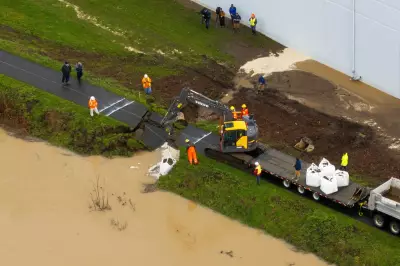
Central Vietnam is grappling with the destructive force of Typhoon Kajiki, which made landfall bringing catastrophic weather conditions. The powerful storm has transformed streets into raging rivers and forced a large-scale emergency response.
Authorities have been compelled to evacuate over 21,000 residents from vulnerable, low-lying areas. The intense rainfall, a hallmark of the typhoon, has significantly increased the risk of devastating landslides in the mountainous regions, posing a severe threat to local communities.
The storm's impact has severely disrupted daily life and transportation networks. Numerous flights have been cancelled or delayed, stranding travellers, and vital rail links along the coast have been suspended as a precautionary measure to ensure public safety.
This is the second major storm to hit Vietnam within a single month, raising concerns about the country's vulnerability to increasingly frequent and severe weather events. The national weather agency has confirmed Kajiki's landfall and continues to monitor the situation closely, warning of ongoing heavy rainfall and potential flash floods.
Emergency services are on high alert, working to manage the aftermath and provide assistance to those affected by the typhoon's path of destruction.





